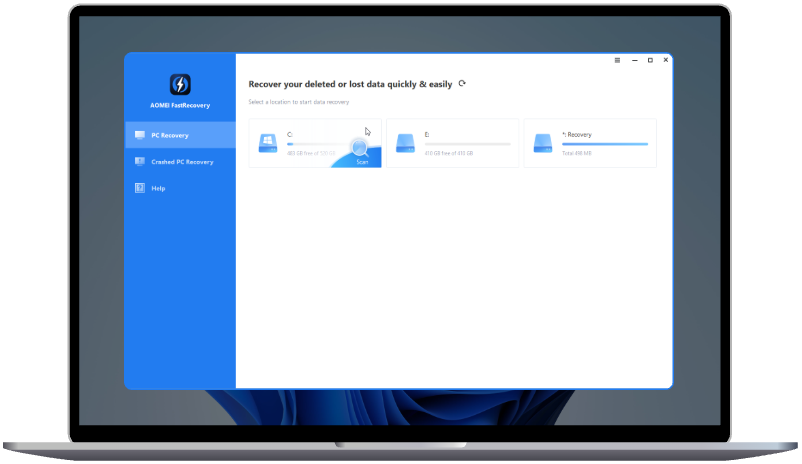Extend Partition on Dynamic Disk in Windows Server [2 Ways]
This tutorial provides two methods for extending partition on dynamic disk in Windows Server, allowing you to manage dynamic more easily and effectively.
What is a dynamic disk?
A dynamic disk is a disk initialized for dynamic storage. It includes simple volumes, spanned volumes, striped volumes, mirrored volumes, and RAID-5 volumes. Dynamic disks and basic disks are different attributes of disks, ordinary users usually use basic disks, but small businesses generally use dynamic disks, because dynamic disks can help users maximize data storage performance better than basic disks.
On basic disks, only contiguous space on the same disk is allowed to be divided into one partition. The biggest advantage of dynamic disks is that they can combine several disks or the capacities on these disks to form a “volume”, and the capacity can be adjusted freely. This solves the problem of insufficient capacity of a single hard disk and limited partition capacity. Allocate capacity flexibly. The volume on the dynamic disk can also provide a variety of fault tolerance functions.
Adjusting the dynamic disk size helps users make full use of disk space, especially to maximize computer performance. For example, when a dynamic volume, especially a system volume, is almost full and needs more space to store new data, it needs to be expanded with the available unallocated space.
How to extend partition on dynamic disk without data loss
There are two ways to extend partition on dynamic disk, using Windows built-in utility “Disk Management” and third-party software “AOMEI Partition Assistant”. Next, I will show you how to extend dynamic disk.
▶ Method 1. Extend partition via Disk Management
We can use Disk Management to extend simple volumes and spanned volumes.
Step 1. Press “Windows + R” and enter “diskmgmt.msc” to open Disk Management. Right-click the volume you want to extend, and click “Extend Volume”.
Step 2. Click “Next” in the Wizard window.
Step 3. Select the disk which contains the free space you want to add into the simple volume and click “Next”.
Step 4. Click “Finish” to extend the dynamic disk volume. Then you will see the simple volume has been extended.
More important:
1. Many people will choose to use Disk Management to extend partition on dynamic disk because it is a built-in tool in Windows. But it also has obvious limitations. Disk Management can only extend or shrink simple volumes and spanned volumes, and cannot extend striped volumes, mirrored volumes, and RAID-5 volumes. In other words, only simple volumes and spanned volumes have “Extend Volume” and “Shrink Volume” options, and the other three volumes have only “Delete Volume” options. If you want to extend striped volumes, mirrored volumes, and RAID-5 volumes, You can only seek third-party software.
2. Only basic disks will have "Extend Volume" grayed out option, dynamic disk extend volume grayed out does not exist.
▶ Method 2. Extend partition by AOMEI Partition Assistant
AOMEI Partition Assistant Server is a powerful disk partition management software. It provides a professional dynamic disk manager, allowing you to adjust the size of all dynamic volumes in Windows 10, 8, and 7 or Windows Server 2003, 2008 (R2), 2012 (R2), 2016, and 2019. It supports extending/shrinking volume, conversion of basic disks and dynamic disks without data loss, moving dynamic volumes from one location to another, etc.
In addition, it also enables you to easily manage the basic disk partitions, such as moving/merging/cloning/splitting partitions, transferring OS to SSD, converting MBR and GPT without deleting partitions, and more advanced functions.
Step 1. Install and launch the software, click “Dynamic Disk Manager” in the right menu.
Step 2. Then, right-click the mirrored volume and select “Resize/Move Volume” in the drop-down menu.
Step 3. In the pop-up window, drag the left slider rightwards to extend dynamic volume. Then, click “OK”.
Step 4. After completing the steps above, you will see the mirrored volume has been extended in the graphics view. To save the changes, you need to click “Commit” on the toolbar.
Conclusion
If you only need to extend the size of simple volumes and spanned volumes, then Disk Management is sufficient for you. But if you want to extend the size of the other three volumes and have other management requirements for dynamic disks, then you must not miss the AOMEI Partition Assistant Server. Enterprise users can use AOMEI Partition Assistant Unlimited, allowing unlimited usage within a company.
